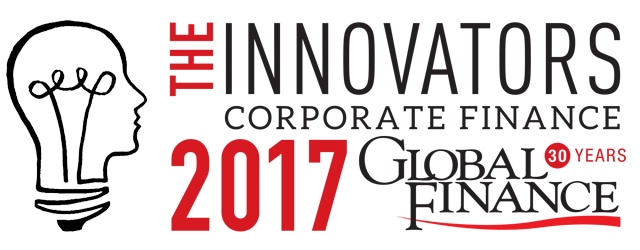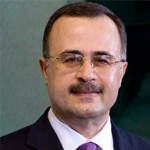Against a background of worldwide crises, companies take advantage of a growing range of capital financing alternatives.

It’s been another crazy year, with Brexit, the election of Donald Trump as US president, tensions building up with Russia, continued strife and displacement in Syria and rising tensions in Asia, all of which are affecting global markets. Each new crisis adversely impacts decisions to lend, expand and invest; and this is felt by corporate finance teams looking to raise capital.
Against such a volatile background, corporations are coming up with increasingly innovative ways to raise funds either through debt or equity financing. They are choosing creative structures from a wider selection of sources. IPO activity has been strong, with plenty of scope for innovation, while certain M&A deals have also taken a more complex direction to ensure that they go through and provide long-term benefits.
DONG Energy | IPO
Process Innovation
Underwriters/global coordinators: JPMorgan, Morgan Stanley and Nordea. Citigroup, Danske Bank, UBS, RBC, Rabobank, ABG Sundal Collier and Lazard were also involved.
This was a global landmark transaction in June 2016 and was a milestone in the Danish energy company’s transformational journey from a local black-energy-focused entity to a global renewable-wind champion.

With a 19.7 billion Danish kroner ($2.9 billion) offer size and an equity market value of 98.2 billion Danish kroner, the deal at the time of the offering, was the largest IPO globally (fourth largest at year-end 2016) and remains the largest IPO ever in Denmark.
The offer consisted of 100% secondary shares, corresponding to 20.1% of the total number of shares outstanding in DONG Energy, offered by the Kingdom of Denmark, New Energy Investment (funds managed by Goldman Sachs Merchant Banking Division), SEAS-NVE, ATP and others. With a price at 235 Danish kroner per share, the deal priced well above the midpoint of the 200–255 Danish kroner price range, as a result of very strong interest from Danish and international institutional investors as well as a strongly anchored Danish retail investor base.
Nordea coordinated the offering to retail investors in Denmark, which were allocated 10% of the shares offered, while the remaining 90% were allocated to Danish and international institutional investors. As a result, around 36,000 new shareholders were allocated shares in DONG Energy.
With the ownership structure including the Kingdom of Denmark, there was high public scrutiny of the transaction. Goldman’s investment has proved particularly controversial, due to the price it paid for shares three years ago. Back then DONG was struggling, but it is now well positioned to be global leader in renewables.
Jose Cuervo | IPO
Process Innovation
Underwriters: In Mexico, the listing agents are Morgan Stanley, JPMorgan, Santander and GBM. Internationally, Morgan Stanley and JPMorgan handled the issue.
The Jose Cuervo IPO raised more than $900 million, achieving a market capitalization of $6.4 billion. Reportedly delayed twice last year, the Mexican tequila maker’s debut exceeded expectations, overcoming both a weak peso and tariff threats from President Trump.
Aranda, a subsidiary of Singapore state investor Temasek Holdings, took a 20% stake in the listing of some 476.6 million shares priced between 30 and 34 Mexican pesos ($1.60 to $1.82), to provide a firm foundation for the deal; while 15% of the offering was an “overallotment option,” which was about eight times oversubscribed (allowing the underwriters to sell more shares to investors than were originally agreed) for international investors, based on demand.
This was the biggest IPO in Mexico since Grupo Lala raised an initial $938 million in 2013. Since then, Mexican IPOs have been thin on the ground. Initial fears about timing proved unfounded, and a decline in the peso since the US election might have made the tequila maker even more attractive to the North American market, which accounts for 64% of Jose Cuervo’s revenue.
Following the success of the Jose Cuervo IPO, Mexican retail brand Grupo Axo has revived plans for an IPO of up to 3 billion Mexican pesos that was shelved in November following Trump’s election win.
Lenovo | Dual Tranche Financing
Process Innovation
Lead managers: Australia and New Zealand Banking Group; Bank of Communications, Hong Kong Branch; Barclays Bank PLC; BNP Paribas; China Construction Bank (Asia); Citigroup Global Markets; Credit Agricole Corporate and Investment Bank; DBS Bank; Merrill Lynch International; Mizuho Securities Asia; Morgan Stanley; MUFG Securities EMEA; Societe Generale and Standard Chartered Bank.
The financing consists of a senior tranche of $500 million 3.9% notes due in 2022 and a subordinated tranche of $850 million 5.4% perpetual notes in the form of cumulative preferred shares. This innovative transaction involves a perpetual security, structured as a preference share of a Cayman company rather than as a bond. Another interesting feature was the performance guarantee by Lenovo, which was used to maintain the integrity of the special-purpose vehicle.
Lenovo needs to pay Google $1.5 billion at the end of the year as part of a three-year promissory note following the acquisition of Motorola Mobility. While tightened curbs on capital outflows in China have made it hard for Chinese companies to use their renminbi earned domestically overseas, Lenovo treasurer Damian Glendinning says these latest bond issues are not intended to refinance that note and repay the debt.
LIBERTY GLOBAL | Acquisition Of Cable & Wireless Communications
Process Innovation
Advisers: Goldman Sachs Group and LionTree Advisors assisted Liberty Global. Evercore Partners and JPMorgan Chase worked with Cable & Wireless Communications.
Liberty Global ran four simultaneous offers for the acquisition of Cable & Wireless, navigating both US and UK merger and accounting rules. Paid for mostly with Liberty Global stock, the deal was composed of three offers, with board chairman John Malone and two other major shareholders in Cable & Wireless effectively accepting a lower price to get the takeover completed.
While Cable & Wireless backed the simplest option of 86.82 British pence ($1.12) per share, that includes mostly Liberty Global stock along with a 3 pence per share special dividend, the other two offers included a mix of Liberty Global stock and special shadow stock that tracks the company’s Latin American and Caribbean group, LiLAC.
Malone’s more complex recommendation won the day, and Cable & Wireless will be integrated into LiLAC, which was created to give direct exposure to Latin America for investors who want it. Malone, who already owned 13% of Cable & Wireless, will be paid in LiLAC stock. Other investors in the British company will get Liberty Global shares.
NTPC | Green Masala Bond Issue
Process & Product Innovation
Issuances: Axis Bank, HSBC, MUFG and Standard Chartered.
India’s largest power utility company, NTPC, completed its landmark 20 billion Indian rupee ($312 million) green masala bond issue in August.

The bond is the first of its kind and is dual listed on the London and Singapore stock exchanges. Issuance was rupee denominated but settled in US dollars, to provide investors with exposure to the local currency.
“We are proud to have issued the first green masala bond from India,” states NTPC finance director Kulamani Biswal, who says the bond scores several firsts: “It is the first masala bond of the company, the first green masala bond with certification from the Climate Bonds Initiative, the first five-year masala bond from an Indian corporation and the first with dual listing at Singapore and London.”
Keen to tap a new investor base for its renewable energy program and attract offshore financing without the associated exchange risks, Biswal says the green masala bond helped the company achieve both objectives.
While the issuance opened up a new international channel of finance for Indian issuers, it was also a sign of the coming of age of Indian debt and renewed faith in the rupee.
While 70% of investors were from Asia, the rest were from Europe and the Middle East. Notes were distributed 80% to fund managers, insurance companies and sovereign wealth funds, 15% to banks and 5% to others.
Saudi Aramco | Hybrid Sukuk Debt Sale
Process Innovation
Arrangers and joint lead coordinators: Alinma Investment, HSBC Saudi Arabia, NCB Capital and Riyad Capital. Dealer roles: GIB Capital, Samba Capital and Saudi Fransi Capital.
The world’s largest oil and gas producer, Saudi Aramco, chose a hybrid sukuk in its debut debt sale, raising $3 billion.

At least 51% of the Aramco sukuk’s raised funds will be used in a mudaraba agreement—a profit partnership in which one partner provides capital and the other provides labor and/or business and management expertise. The proceeds of this part of the hybrid sukuk could be invested in Aramco’s operating business and used for general corporate purposes. No more than 49% of funds will come from a murabaha facility that could be used to buy or finance payments on the sukuk, along with tangible assets such as machinery, corporate property, commodities, products and services—all through a special-purpose vehicle, such as an intermediary bank or asset manager.
The hybrid structure allows diversified investor demands, opening a wider portfolio of asset classes to generate the most funds.
Snapchat | IPO
Process Innovation
Lead underwriters: Morgan Stanley and Goldman Sachs. Others: Deutsche Bank, Barclays, Credit Suisse Group and Allen & Co.
Snap, the parent company of Snapchat, faced a conundrum similar to many digital start-ups: while hugely innovative and trailblazing, Snap lost $514.6 million in 2016 and has yet to see any profit.

Snap had previously turned down acquisition offers from Facebook ($3 billion) and Alphabet, parent of Google ($4 billion), and hype around the Snapchat IPO was extreme. Shares of Snap closed on their first day of trading up 44%, to $24.48 per share, which resulted in boosting Snap’s market cap to $33 billion.
Snap is the first company to complete an IPO that includes Class A shares with nonvoting rights on a US stock exchange. This will give investors absolutely no say in how the company is run, including potential activist investors.
Snap’s unique stock structure—Class A shares, with no voting rights, only the ability to attend the company’s annual meeting and ask questions; Class B shares, with one vote apiece, for company executives and early investors; and Class C shares, reserved for Snap’s co-founders, CEO Evan Spiegel and CTO Bobby Murphy, with 10 votes apiece—may seem to call for blind faith; but investor confidence in the unprofitable social-messaging app is based largely on the product-design genius of Spiegel, billed at the Snap investor road show as a once-in-a-generation founder.
Snapchat also boasts a novel advertising model and high number of active users. With roughly 100 million daily users, Snap charges a minimum of $750,000 for a day of advertising—rather than charging per click, as is the Internet norm. Advertisers are particularly drawn to Snapchat’s young users, who no longer watch TV in the same numbers they once did; and investors and advertisers are drawn to the revenue potential of a demographic that uses video rather than text.
Process Innovation
Sole arranger: Stanbic Bank Botswana (a member of the Standard Bank Group).
Stanbic Bank Botswana raised a $35 million bilateral loan for a Botswana based multinational ecotourism company, Wilderness Safaris, which currently operates 50 camps across eight African countries. The loan was for the purchase of a new ecotourism company in Kenya, to finance reinvestment into flagship properties in Botswana and Namibia and for further expansion across Africa.
This is a structured, multicurrency loan facility, and the proceeds will be deployed over several years in multiple currencies, thereby creating a natural hedge against foreign exchange risks. It is one of the largest corporate deals in Botswana in 2016, which Stanbic Bank Botswana was able to fully fund on a bilateral basis.
Leveraging a loan for deployment across many camps in different countries presents a unique set of complexities, but Stanbic Bank Botswana’s footprint across 20 countries on the continent provides Wilderness Safaris with an on-the-ground banking partner that has regional and local expertise. Bespoke funding solutions will also help protect against currency volatility and help generate future growth, while addressing Africa’s liquidity challenges.



